Nettle Beer Recipe
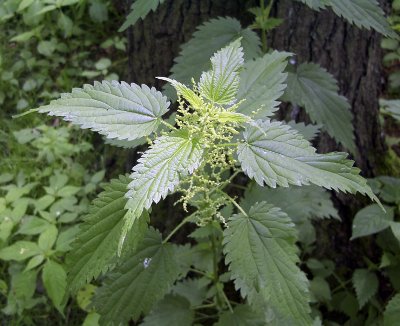
By Ben Mardis
Wild-foraged stinging nettle plants can be turned into a tasty tonic with this nettle beer recipe.
It’s a great feeling to arrive home with a paper sack full of wild stinging nettle greens after discovering a fantastic patch.
When harvested sustainably by cutting just the tops, nettles seem to thrive after getting a “haircut’’, so I often find myself bringing home more food than I could possibly eat that day let alone in that week. My frivolous foraging is not without reason however. I can preserve the leaves by drying and storing in an air-tight container, freezing fresh, and making nettle pesto. Once I have enough wild greens put away for the whole year, I’ll make a couple gallons of beer with any remaining surplus.
Fresh nettle tea stored in the refrigerator will only stay good for about one to two weeks, but making a fermented beverage helps preserve the nutrients of the greens for an extended period of time. Almost any wild green that you enjoy the taste of can be made into beer. In this article I’ll be going over how to make beer with stinging nettle (Urtica dioica).
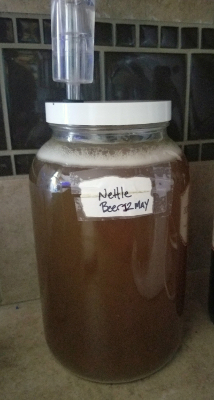 Brewing nettle beer in a container that has an airlock
Brewing nettle beer in a container that has an airlockMaking nettle beer is so easy and is a very good way to get familiar with making alcoholic beverages in general. There are many nettle beer recipes out there but understanding the simple fundamental concepts will help you realize how few ingredients you really need to make it.
To make alcohol all you need is yeast, some form of sugar, and liquid to make the concoction anaerobic (devoid of oxygen). In contrast, fermentation with oxygen makes vinegar. It’s best to get comfortable with a simple nettle beer recipe before diving into one that has a bunch of different ingredients.
This nettle beer recipe turns out a very light and refreshing beverage and is a good one to start off with:
Nettle Beer Recipe - Equipment, Ingredients, and Directions:
Equipment:
-2 medium pots
-bowl
-some sort of strainer, muslin, or nut milk bag
-wooden spoon
-large wine bottle with a balloon, or a ½ gallon fermentation vessel with an airlock
Ingredients:
-8 ounces (by weight) of stinging nettle leaves (harvested in spring before going to flower). This is roughly about a gallon jar loosely packed. You can also throw in any other wild greens that you like such as miner's lettuce, cleavers, lambs quarters, or chickweed.
-½ gallon of water
-½ to 1 cup of sugar (you could also use honey or brown sugar)
-2tbs of apple cider vinegar or juice from 1 lemon
-½ tsp of ale yeast (order online or at a home brew store)
-1 ounce of fresh ginger finely chopped (optional)
Directions:
-Begin by preparing a nettle infusion: Bring a little more than a half of a gallon of water (to account for reduction) to a boil and then add in the nettle leaves and other wild greens. Turn off the heat and let sit for anywhere from 1 to 4 hours. The longer the steeping time the stronger the flavor will be.
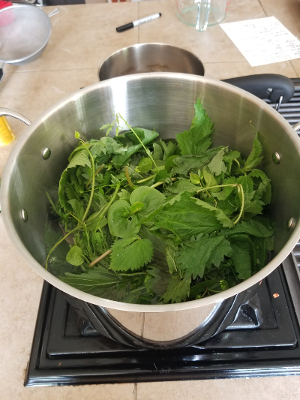 Making the infusion
Making the infusion-Once cooled to room temperature strain the infusion through a muslin or nut milk bag and squeeze out the excess moisture into the second pot. You can set aside the pulp for making pesto or drying in a dehydrator later if you like.
Be More Prepared For Your Next Outdoor Adventure!

Don't leave home without knowing these six essential survival skills. Our free survival mini guide reveals the strategies of:
- Shelter & fire to prevent the number one cause of death
- Obtaining clean water to avoid life-threatening dehydration
- Common wild survival foods and other critical skills!

-Pour about a cup of the liquid into the bowl and add the yeast. Leave this to set for about 10 minutes to fully rehydrate the yeast.
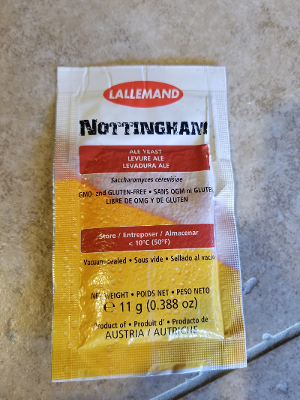 Ale Yeast
Ale Yeast-In the meantime finely chop the ginger and add to the fermentation vessel.
-Add lemon juice or apple cider vinegar and sugar to the infusion pot.
-Mix until the sugar is thoroughly dissolved.
-Once the yeast is rehydrated pour the bowl of liquid into the pot and mix.
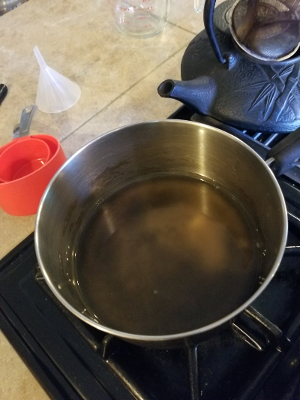
-Carefully pour the pot of liquid into a fermentation vessel. Using a funnel or liquid measuring cup can be helpful for this step.
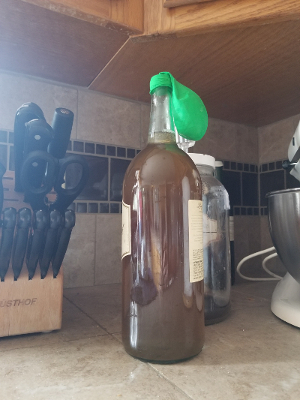
-Label the fermentation vessel with the contents and the start and end date for fermenting. The beer will be lightly bubbly and ready to drink after about 3 days or when the yeast activity has slowed down and the brew is no longer vigorously bubbling. After this time carefully pour off the beer into whatever airtight vessels you choose to use for long term storage.
-Be sure to burp (release some pressure) from the vessels for a few days to prevent excess pressure build up. Omitting this step could lead to your vessel exploding randomly from over-pressurization!
- Enjoy! This is a great nutritional beverage for the winter when fresh greens are no longer available. Open vessels very slowly to release the pressure, just a word of caution.
I hope you have fun experimenting with fermenting your favorite wild greens! Maybe we'll see you at one of our upcoming wild plants courses!
By the way, when you're out foraging, it's important to know how to stay safe in the outdoors, especially if you were to get lost. Right now you can get a free copy of our mini survival guide here, where you'll discover six key strategies for outdoor emergencies, plus often-overlooked survival tips.
Related Resources:
Stinging Nettle Identification and Uses
Stinging Nettle Tea and Infusions
How to Make Stinging Nettle Soup
How to Make Cordage (Rope) from Stinging Nettle
Wild Edible & Medicinal Plants Courses at Alderleaf

About the Author: Ben Mardis is an experienced educator that is passionate about permaculture and naturalist skills. He is a guest instructor at Alderleaf. Learn more about Ben Mardis.
Return from Nettle Beer Recipe back to Wild Plants Articles
Is The Essential Wilderness Survival Skills Course Right for You? Take the "Online Survival Training Readiness" Quiz
See for yourself if this eye-opening course is a good fit for you. It takes just a few minutes! Get your Survival Training Readiness Score Now!

Grow Your Outdoor Skills! Get monthly updates on new wilderness skills, upcoming courses, and special opportunities. Join the free Alderleaf eNews and as a welcome gift you'll get a copy of our Mini Survival Guide.

 The Six Keys to Survival: Get a free copy of our survival mini-guide and monthly tips!
The Six Keys to Survival: Get a free copy of our survival mini-guide and monthly tips!
Learn more